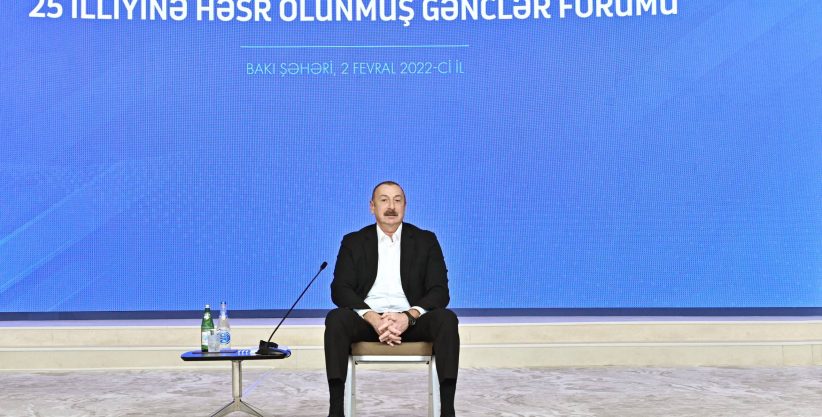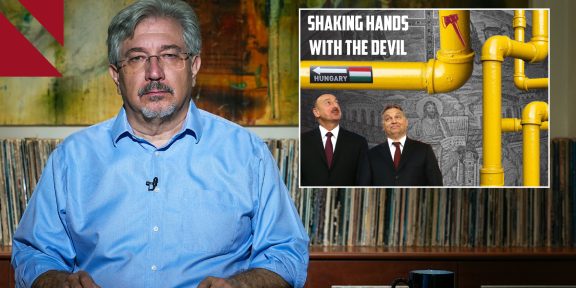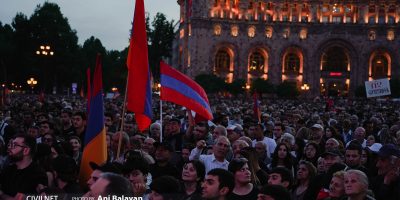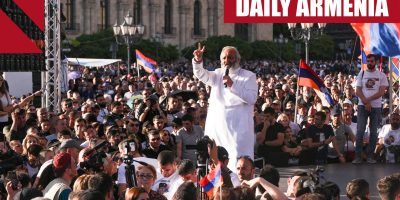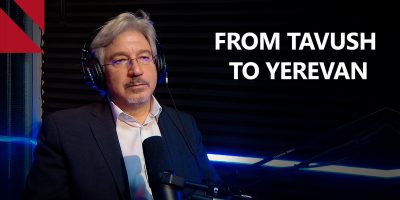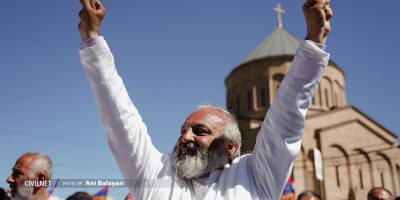By Dr. Naira Sahakyan
In 2022, several prominent organizations, including Genocide Watch, issued a genocide warning set in motion by Azerbaijan’s unprovoked military attacks on Armenia and the unrecognized Armenian Republic of Artsakh (Nagorno-Karabakh). This was just one of the many attacks that Baku launched while violating the November 9 ceasefire agreement and causing an increasingly dire humanitarian situation in the region.
The most recent crisis is the nearly five-month-long blockade of the Lachin corridor – the only road that connects Artsakh to Armenia and to the rest of the world. This is yet another violation of the agreement.
Since December 12, 2022, dozens of Azerbaijani protesters, believed to be supported by the Azerbaijani authorities, have blockaded Nagorno-Karabakh, making it inaccessible to civilian and commercial traffic. As a result, 120,000 ethnic Armenians residing in the region have been left without access to essential goods and services such as medicine and food supplies. Official rhetoric makes it clear that the main goal of the Azerbaijani regime is to ethnically cleanse Artsakh.
The new humanitarian crisis and possible escalation of the conflict can result in the second genocide of the Armenian people (the first occurred in 1915 when the Ottoman Empire organized and systematically murdered around 1.5 million Armenians).
While this may sound like an exaggeration, my analysis of Ilham Aliyev’s speeches indicates the probability of such a horrendous event. To demonstrate Aliyev’s genocidal intent, I will use genocide scholar and Professor of International Studies at Yale University Ben Kiernan’s four components of genocidal thinking: Racism, Expansionism, cults of Antiquity, and cults of Cultivation.
“The perpetrators of the 1915 Armenian genocide, the Holocaust during World War II, and the Cambodian genocide of 1975–79 were, respectively, militarists, Nazis, and communists. All three events were unique in important ways. Yet racism – Turkish, German, and Khmer – was a key component of the ideology of each regime. Racism was also conflated with religion. Although all three regimes were atheistic, each particularly targeted religious minorities (Christians, Jews, and Muslims). All three regimes also attempted to expand their territories into a contiguous heartland (“Turkestan,” “Lebensraum,” and “Kampuchea Krom”), mobilizing primordial racial rights and connections to the land. Consistent with this, all three regimes idealized their ethnic peasantry as the true “national” class, the ethnic soil from which the new state grew.
These ideological elements – race, religion, expansion, and cultivation – make an explosive mixture. Most also appear, indifferent colors and compounds, in the chemistry of other cases of genocide.”(Kiernan, 2003)
My analysis of Ilham Aliyev’s speeches demonstrate that these ideological elements are present in his discourse throughout the Nagorno-Karabakh conflict, making it all the more important to be aware of the potential for violence and take steps to prevent it.
Racism
According to Kiernan, racism is the first component of genocidal thinking. For example, during the Cambodian Genocide in the 1970s, the Khmer Rouge considered its captive urban populations “subhuman” (anoupracheachun), the same term the Nazis had used for conquered Slavic Untermenschen (Kiernan, 2003).
The xenophobic and racist lexicon against Armenians can be followed in dozens of Ilham Aliyev’s speeches as well. Aliyev often dehumanizes Armenians by promoting Azerbaijanis as superior to Armenians. Perhaps, the culmination of this rhetoric became Aliyev’s addresses to Azerbaijanis during the 2020 Karabakh war when his vocabulary became more raucous. Armenians are often depicted as immune to persuasion and reason: ‘They have neither conscience nor morality. They do not even have a brain.’ Aliyev also describes the Azerbaijani army as a power that can eliminate the “brainless” Armenians.
Expansionism
Genocidal regimes often claim that they must “purify” both a specific race and the territory they occupy. During 1977-78, the Khmer Rouge regime initiated assaults on Vietnam, Laos, and Thailand, andCambodia. The leadership under Pol Pot had aspirations to reclaim certain Khmer-speaking regions that were once part of the historical Angkor empire. This expansionism was also core of the Nazi Lebensraum (Browning, 1992).
The expansionist tendencies of Azerbaijan share similarities with the expansionism seen in other genocide perpetrators.
Azerbaijan’s first target is the Republic of Artsakh Aliyev’s discourse regarding what it calls “historic Azerbaijan” includes so-called Western and Eastern Azerbaijans. During its two-decade old reign, Ilham Aliyev has often referred to“Western Azerbaijan” as the Republic of Armenia. “We are also informing the world community, the world public that not only Nagorno-Karabakh but also present-day Armenia are our historical lands,” reads one of Aliyev’s speeches. This rhetoric about a “greater” or “whole” Azerbaijan includes Iranian territories as well, what Aliyev refers to as “South Azerbaijan.”
Cults of Antiquity
With the idea of the “Whole Azerbaijan” comes the third component of genocidal thinking, the cult of antiquity. For Aliyev that mythical antique era of a strong and undivided Azerbaijan is the period prior to the 19th century. In Aliyev’s understanding, this period is not only about Azerbaijani territories but also about the time when the region had no Armenians.
“The Armenian people were not here at that time. The Armenian people were brought to our ancestral lands after the Kurakchay, Gulustan and Turkmenchay peace treaties. They were deliberately brought and resettled in Karabakh, one of the most fascinating corners of our country, and appropriate conditions were created for them,” states Aliyev.
As Kiernan writes, “the leaders of the Young Turks, Nazis, and Khmer Rouge came disproportionately from “lost” territories beyond the shrinking homeland.” In the context of the narrative of territorial decline, the genocidal regimes create their image as powers that will return lost lands. Aliyev is imaging himself exactly as that kind of a leader.
Cults of Cultivation
The fourth metaphysical preoccupation of genocidal world view is what Kirenan refers to as the cult of cultivation. During colonial and non-colonial genocides, idealization of the peasant cultivator played a significant role.
Enver Pasha, one of the main architects of the Armenian Genocide of 1915, claimed that “those who do not work should be destroyed” (Alexinsky, 1923). A similar type of thinking can be traced in the cases of the Holocoust and the Cambodian genocides as well.
For Aliyev, the “cult of cultivation” is expressed in the context of the restoration of the territories under the Azerbaijani control after the 2020 War. While talking about the region of Aghdam, which was destroyed during the first Karabakh War, Aliyev says, “This city, and the whole district, will be exemplary for the world.” In the context of the construction of the territories gained after the 2020 War, Aliyev describes Azerbaijani side as hard-working and creative while Armenians are depicted as destroyers.
The ongoing blockade of Artsakh, the inaction of international organizations, combined with the indifference of the international community, the world may witness yet another preventable genocide.
Kiernan, B. (2003). Twentieth-Century Genocides: Underlying Ideological Themes from Armenia to East Timor. In R. Gellately & B. Kiernan (Eds.), The Specter of Genocide: Mass Murder in Historical Perspective (pp. 29-52). Cambridge: Cambridge University Press
Gregor Alexinsky, “Bolshevism and the Turks,” Quarterly Review 239 (1923): 183–97, at 185–86.
Christopher R. Browning, The Path to Genocide: Essays on Launching the Final Solution (New York, 1992), 26.
Dr. Naira Sahakyan is a Senior Researcher at the Armenian Genocide Museum Institute, a Visiting Scholar at the University of Cambridge, and a lecturer at the American University of Armenia and the Yerevan State University.




